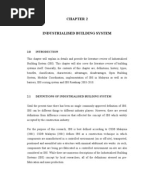Pam Contract 2006
Posted : admin On 16.01.2020
The Pertubuhan Akitek Malaysia (PAM) standard forms of building contract are used extensively in the Malaysian building industry. The Malaysian construction industry is familiar with the meanings of provisions of the PAM Forms through practice and court decisions. It is estimated that 90% of the building contracts in the private sector are based on a PAM form namely, the PAM/ISM 1969 Form or the PAM 1998 Form.In 2007, PAM introduced the PAM 2006 Forms as drafted by the PAM Contract Review Committee. It is not disputed that the PAM 2006 Forms significantly change the way the risks for time, money matters, quality issues and dispute resolution are allocated between the contractor, employer and consultant team. The Forms are also more procedural, requiring the contractor, employer and consultants to strictly adhere to time provisions with the attendant loss of rights or incurring of liabilities.
Pam Contract 2006 Extension Of Time
The Forms were made available for use in 2008.The earlier books on the PAM/ISM 1969 Form by the late Professor Vincent Powell-Smith and the PAM 1998 Form by Mr. Sundra Rajoo have been well received. This book expands on the approach of the earlier two books to produce a new book which combines an exposition of the modern law in relation to construction together with a commentary on the relevant contract conditions. This work is intended to stimulate debate and alert users in the building industry to the changes brought about by the PAM 2006 Form. It is not a mere commentary but is comprehensive enough to cover issues of construction law arising thereof.As such, the book critically examines by way of practical overview and judicial principles, the notable revisions that have been undertaken, the plus points of such revisions, the apparent deficiencies and drawbacks in practice, foreseeable areas of contention and possible improvements. It sets out the applicable general principles of construction law, a description of how the provision is anticipated to work in practice and wherever possible, provides concrete examples arising from case law.

The Pertubuhan Akitek Malaysia (PAM) standard forms of building contract are used extensively in the Malaysian building industry. The Malaysian construction industry is familiar with the meanings of provisions of the PAM Forms through practice and court decisions. It is estimated that 90% of the building contracts in the private sector are based on a PAM form namely, the PAM/ISM 1969 Form or the PAM 1998 Form.In 2007, PAM introduced the PAM 2006 Forms as drafted by the PAM Contract Review Committee. It is not disputed that the PAM 2006 Forms significantly change the way the risks for time, money matters, quality issues and dispute resolution are allocated between the contractor, employer and consultant team. The Forms are also more procedural, requiring the contractor, employer and consultants to strictly adhere to time provisions with the attendant loss of rights or incurring of liabilities. The Forms were made available for use in 2008.The earlier books on the PAM/ISM 1969 Form by the late Professor Vincent Powell-Smith and the PAM 1998 Form by Mr. Sundra Rajoo have been well received.
This book expands on the approach of the earlier two books to produce a new book which combines an exposition of the modern law in relation to construction together with a commentary on the relevant contract conditions. This work is intended to stimulate debate and alert users in the building industry to the changes brought about by the PAM 2006 Form. It is not a mere commentary but is comprehensive enough to cover issues of construction law arising thereof.As such, the book critically examines by way of practical overview and judicial principles, the notable revisions that have been undertaken, the plus points of such revisions, the apparent deficiencies and drawbacks in practice, foreseeable areas of contention and possible improvements. It sets out the applicable general principles of construction law, a description of how the provision is anticipated to work in practice and wherever possible, provides concrete examples arising from case law.For purchase inquiries, please write to.Table of ContentsDivision 1IntroductionMaking of PAM/ISM FormsMaking of PAM 2006 FormDivision IICondition of ContractLayout Articles of AgreementPreliminary RecitalsArticlesArticles 1-8Attestation/Signatories of the PartiesThe Conditions of ContractClauses 1.0-38.0AppendixAbout the Author(s)Sundra RajooB. Sc(HBP) Hons (USM), LLB Hons (London), CLP, Grad Dip in Architecture (TCAE), Grad Dip in Urban and Regional Planning (TSIT), M.
In Construction Law and Arbitration (With Merit) (LMU), MPhil in Law (Manchester), Diploma in International Commercial Arbitration (CIArb) APAM, APPM, FCIArb, FMIArb, FSIArb, FICA, MAE, RAIA, is currently the Director of the Kuala Lumpur Regional Centre for Arbitration. He is also a Chartered Arbitrator and an Advocate & Solicitor (non-practising). He had earlier practised as an Architect and Town Planner. He has been appointed as chairman, co-arbitrator of three-man panels and sole arbitrator in international and domestic arbitrations.
He was a Visiting Associate Professor with Universiti Tecknologi Malaysia. He was commissioned by Malaysian Institute of Architects (PAM) to complete revisions to the PAM/ISM 1969 Form.
The result of the commission was the PAM 1998 Form. Sundra Rajoo is the founding President of the Society of Construction Law (KL & Selangor), Past Chairman of the Chartered Institute of Arbitrators (Malaysia Branch), Past Deputy President of the Malaysian Institute of Arbitrators and Past Council Member of the Malaysian Institute of Architects. He is the Country Representative of the Dispute Review Board Foundation in Seattle, USA. He won the Annual Prize, North-East Branch in 1996 and the Cedric Barclay Prize in 2002 of the Chartered Institute of Arbitrators, United Kingdom.He is author of Law, Practice and Procedure of Arbitration (2003), The Malaysian Standard Form of Building Contract (The PAM 1998 Form), 2nd Edition, (1999), the Arbitration title of the Halsbury Laws of Malaysia, (2002) and co-author with Dato' WSW Davidson of the Arbitration Act 2005? UNCITRAL Model Law as applied in Malaysia (2007).Dato' W.S.W. DavidsonDato' W.S.W.
Davidson is an experienced legal practitioner who has been in practice in Malaysia for over 45 years and is also an experienced arbitrator. He has been involved as counsel and as arbitrator in construction disputes both domestic and international for the past 25 years. He is the co-author with Sundra Rajoo of the Arbitration Act 2005, UNCITRAL Model law as applied in Malaysia (2007).Ir. Harbans Singh K.S.Ir. Harbans Singh is a Professional and Chartered Engineer, Arbitrator, Mediator, Advocate & Solicitor (non-practising). He commenced his career in Malaysia before working in Germany and then locally in various professional capacities. He is presently domiciled in Malaysia where he is active in construction law and dispute resolution.
Apr 08, 2010 Includes bibliographical references (p. 205-232) and index This is the first comprehensive critical evaluation of the use of rational choice explanations in political science. Writing in an accessible and nontechnical style, Donald P. Green and Ian Shapiro assess rational choice theory where it is reputed to be most successful: the study of collective action, the behavior of political parties. Pathologies of Rational Choice Theories: A Critique of Applications in Political Science1. In this book Green and Shapiro diagnose the main problems that rational choice theories most commonly suffer from and also they suggest certain remedies that rational choice theorists could. Rational Choice Theory Pathologies of 'Common Sense' JAMES JOHNSON University of Rochester Donald Green and Ian Shapiro, Pathologies of Rational Choice Theory: A Critique of Applications in Political Science. Yale University Press, New Haven, CT, 1994. $25.00 (cloth). Rational choice theory consists primarily of formal, deducti. Rational choice theory successfully explains the problem of social order embodied in various fields. It then examines the theory’s critics and their related problems. Finally, four new new directions of the theory are proposed: more comprehensive understanding of the interaction between actors and institutions; applica. Rational choice theory case examples.
Harbans is the recipient of IEM's Tan Sri Hj.Yusoff Prize (2001), the Cedric Barclay and the Chartered Institute of Arbitrator's Awards for the Diploma in International Commercial Arbitration Examination (Oxford 2003). He is also the author of a series of four books entitled 'Engineering & Construction Contracts Management', contributor to the 'Malaysian Standard Forms & Precedents', 'The Ingenieur' and the 'Malayan Law Journal'.